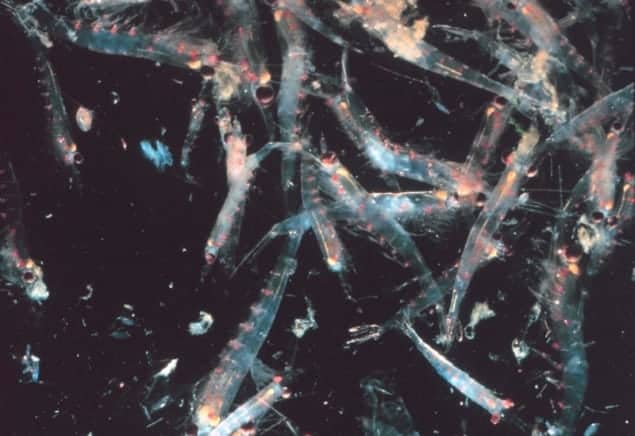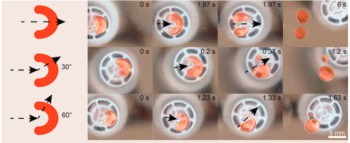
Fluid mixing processes in the oceans play a major part in governing the world’s heat and carbon balances as well as providing a food delivery service to a variety of organisms. The wind and tides play key roles in this process but several research groups have claimed that, perhaps surprisingly, the combined motion of marine organisms could also make a significant contribution to global mixing. Now, a pair of mathematicians in the US have developed a model, which they say suggests that this could indeed be the case.
The idea that marine swimmers are having a significant impact on ocean-mixing was first proposed in the 1960s by Walter Munk, a celebrated researcher in the oceanography community. “Munk set out to list all the factors that could influence mixing in the ocean, and he threw ‘biological processes’ in there, by which he meant the effect of swimming organisms such as fish or plankton,” says Jean-Luc Thiffeault of the University of Wisconsin, who was involved in this latest research.
Despite his insight, however, Munk did not have the data nor the means to establish the extent to which marine life is making a contribution. Due to a lack of experimental results and ongoing debates surrounding the complex interactions between the atmosphere and the oceans, Munk’s idea seemed to fall by the wayside. One of the major objections has always been the issue of scaling – researchers have been unable to see how organisms of the order of a few centimetres could have any significant impact over the thousands of kilometres of oceans.
Swimming into the 21st century
Earlier this year, however, physicsworld.com reported on how researchers in California had demonstrated an alternative mixing mechanism that could enable a significant contribution from smaller organisms. By studying the movement of jellyfish through a water column, the scientists looked at how marine animals drag water with them as they swim up and down. As water density increases with depth, the swimming fish affect the total potential energy of the fluid leading to further ambient fluid motions and eventually molecular mixing.
In this latest research, Thiffeault and his colleague Steve Childress from New York University take this mechanism as a starting point and develop a more complex physical model to gauge the effect this mixing could have on a global scale. They model marine organisms as spheres of 1 cm radius that are travelling at 1 cm/s because these are the parameters of krill, which is an exceptionally common species across the oceans.
In the model the spheres move around randomly without interacting, much like particles in an ideal gas. Thiffeault and Childress are interested in the displacement of water as a result of these moving spheres. Given the large number of spheres involved, tools from statistical physics are used to calculate an “effective diffusivity”, which is related to the flux of molecules triggered by the disturbed sea water.
By no means salt of the Earth
Based on well-established estimates of total biomass in the oceans, the researchers calculate an effective diffusivity triggered by marine swimmers of 6 × 10–5 cm2/s. Significantly, this is four orders of magnitude larger than for the equivalent volume of salt, meaning that if all marine life behaved like grains of salt then their impact on mixing would be substantially reduced. Although it is still 100 times smaller than the effect caused by of heat redistribution in the ocean, it suggests that marine swimmers are indeed making a noticeable contribution to ocean mixing, say the researchers.
What is more, the researchers say that this figure is likely to be a lower limit on the true contribution that marine animals make to ocean mixing. If the model were to include the effect of vortices in the wake of a moving fish, or fish “sticking” due to the viscosity of seawater then the mixing effect could be enhanced. Fish travelling in large schools could also increase the effect as the mixing effect scales nonlinearly with size of body and water currents may also travel through the school.
“The model is simplified but will allow future studies to probe a wide variety of scenarios of fish schooling and the corresponding fluid mixing that is achieved,” says John Dabiri of California Institute of Technology who carried out the earlier research on water displacement. “Water parcels can become trapped within the shoal and transported over large distances. This process can significantly enhance the stirring of the water, which ultimately leads to enhanced mixing”.
Dabiri also recognizes the significance of this latest research to climate science. “The model appears sufficiently flexible that one could simulate various scenarios of future animal population dynamics, perhaps including dynamics caused by climate change.
Thiffeault told physicsworld.com that he hopes to develop this research by making the model more sophisticated and testing the results through collaborations with experimental teams.
This research is available for free download on the arXiv preprint server.



